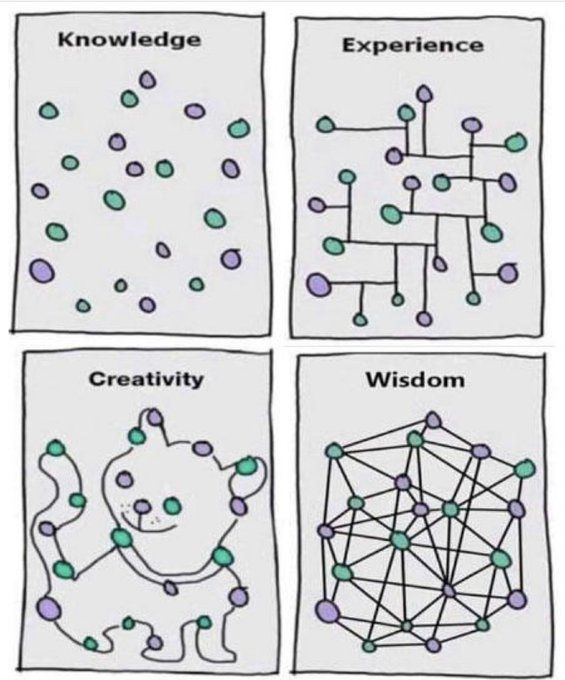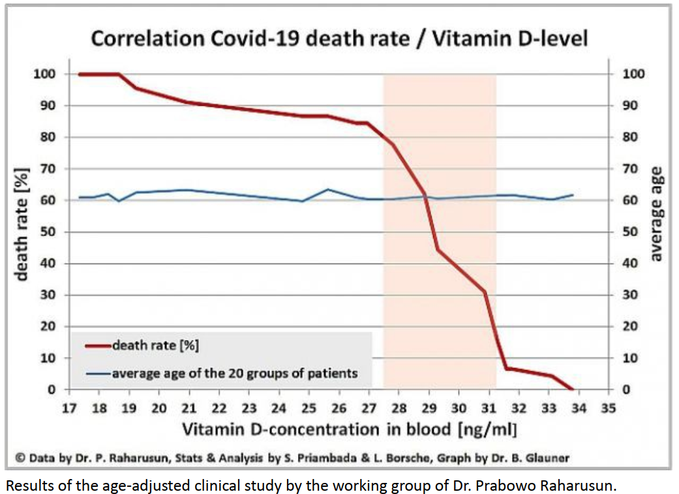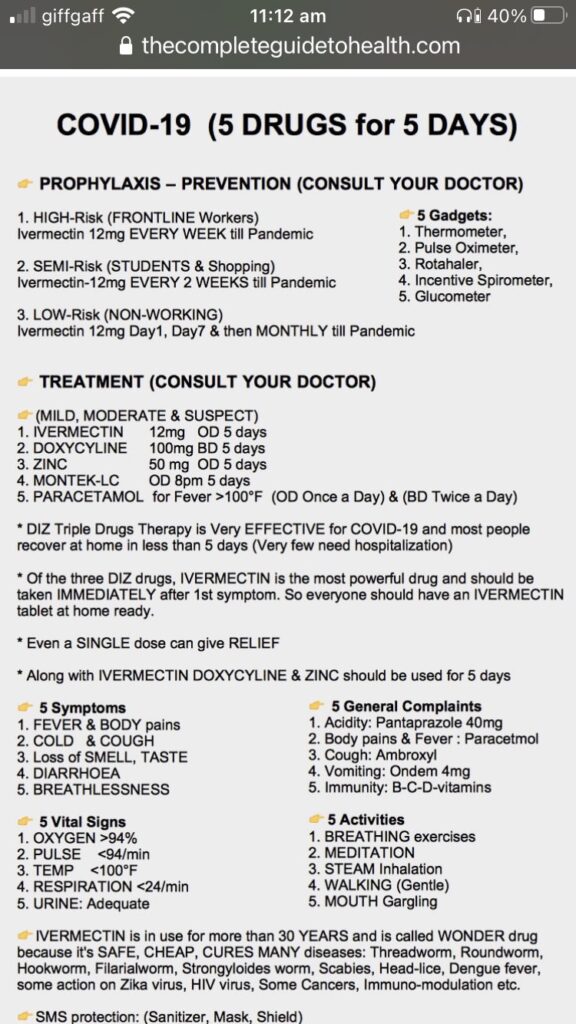The longer a viral infection is allowed to progress the more cells are killed or damaged, either by the viral replication, or by the damaged cells contents harming the surrounding tissue . See for more information: Pathophysiological Basis and Rationale for Early Outpatient Treatment of SARS-CoV-2 (COVID-19) Infection. (1)
*post updated 8/1/2021, & 8/24/2021, & 9/2/2021.
See my recent post for a variety of nutrients or other strategies which may help prevent or provide early treatment for a viral infection: COVID19, summary of nutrients that might help prevent, treat, recover. Or more recent: Spike Protein Risks & Aids – summary list.
The post Niacin may help prevent or treat migraines also includes a graphic by Dmitry Katz, PhD about the cofactors used in the Citric Acid Cycle by mitochondria when they are performing aerobic glycolysis – metabolizing sugar with the use of oxygen. Mitochondrial dysfunction and a shift to anaerobic metabolism of sugar or glutamate, fermentation, is associated with cancer cells and other chronic degenerative disease. The cause may be limited nutrients – the list of cofactors needed is long and includes niacin.
Cofactors needed in the Citric Acid Cycle include niacin:
- B vitamins: B1 (Thiamin) (3) , B2 (Riboflavin) (4), B3 (Niacin) (8, 10), B5 (Pantothenic acid) (5), B6 (Pyridoxine) (6, 7), B7 (Biotin), B9 (Folate) (9),
- Minerals (17): Mg++ (Magnesium) (11, 12, 13), Mn++ (Manganese), K+ (Potassium) (13), Zinc (14, 15), Iron (16), Copper, Sulfate,
- Amino acids: Carnitine (derived from lysine), Cysteine,
- Antioxidants: CoQ10, Glutathione, Alpha-Lipoic Acid (ALA).
Niacin in a large dose may help with treatment of an active COVID19 illness or the symptoms of LongCovid. Specifically the niacin/nicotinic acid form, not niacinamide. The “niacin flush” that occurs is warm – and is removing inflammation along with the increased sensation of warmth on the skin. Feeling a little chilled as the niacin flush continues is also normal, internally the body is cooling somewhat as the inflammation is being removed as heat on the skin.
This article summarizes the value of a variety of B vitamins against viral infections and/or inflammation and goes into more detail about niacin use for prevention or treatment of infections and inflammation: Is Niacin a Missing Piece of the COVID Puzzle?. (2) Niacin helps our body cope with increased inflammation and without niacin the inflammation continues to become more severe. For more detail see: Sufficient niacin supply: the missing puzzle piece to COVID-19, and beyond? by Dmitry Kats, PhD (3); and Be Well: A Potential Role for Vitamin B in COVID-19, a team project including scientists from several nations. (4)
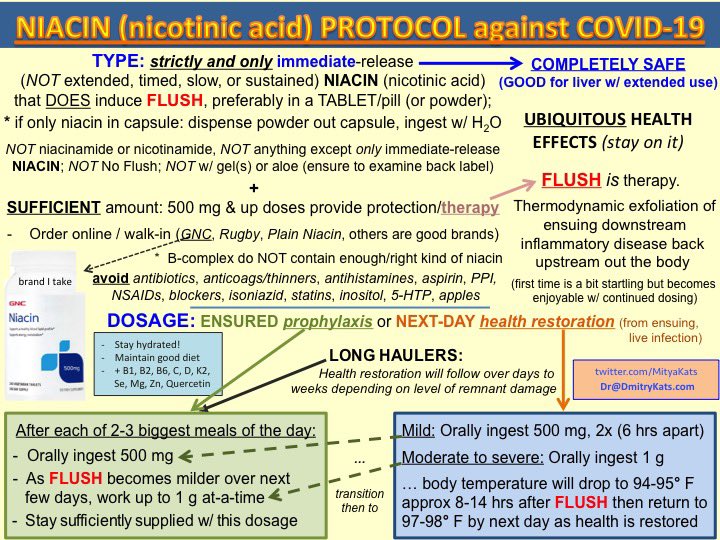
shared with permission of the author, Dmitry Kats, PhD. *His website: niacincurescovid.com.
*The apples and antihistamines can decrease the flush effect if it seems like too much and should be fine at other times of the day, than taken with or shortly after the niacin dose.
Adequate niacin may also help the body have a stable thyroid hormone level. (5)
Low levels of niacin and a metabolite NAD+ may be involved in mitochondrial myopathy which leads to tiredness and weak muscles. Providing 500-1000 milligrams of niacin per day was found to improve muscle strength, increase NAD+ levels to the level seen in the healthy control group, and liver fat decreased by 50% in the experimental group. (6)
Potential short term symptoms – may include serotonin increase.
People who were previously low in serotonin, a neurotransmitter that affects mood and intestinal health, may experience temporary symptoms from an increase in the messenger chemical. Once the body adjusts to the new level of serotonin the symptoms should no longer occur. Symptoms of a sudden increase, or excess of serotonin may include: Agitation or restlessness, Confusion, Rapid heart rate and high blood pressure, Dilated pupils, Loss of muscle coordination or twitching muscles, Muscle rigidity, Heavy sweating, Diarrhea, Headache, Shivering, Goose bumps. (13) People experiencing Serotonin Syndrome for other reasons would likely have more severe symptoms than the short term change due to the increase in niacin. Tryptophan is an amino acid precursor for serotonin and it is depleted when there is inadequate niacin available to make NAD+.
Addition 8/1/21: St. John’s Wort herbal supplements, 5-HTP, and other medications including SSRI antidepressants may increase risk of serotonin toxicity. The problem usually is seen with SSRI use, and treatment generally is to wean off the amount of whatever is being taken, without a sudden stop in case of adverse reaction to that, and the symptoms should lessen. See: St. John’s Wort Drug Interactions with Antidepressants (17)
During acute infection the risk of serotonin toxicity becoming severe is more of a concern to medical professionals I’ve been in communication with. The gradual increase over time may help when it is being used preventatively. Caution is advised with high dose niacin use. Serotonin inhibitor treatment would be needed if the problem of serotonin excess was severe.
Addition 8/24/2021: The FLCCC protocol for CoV may include SSRI medications and trying the niacin protocol and the I-MASK+ FLCCC protocol in combination may increase risk of the serotonin excess. Sudden increase of the niacin dosing to the 1000 mg amounts may also increase the risk of the adverse symptoms of serotonin excess. Try to remain calm, it is temporary though can be dangerous. Seek medical help and cut back on the niacin or SSRIs but suddenly stopping may also be risky. The FLCCC protocol uses fluvoxamine an SSRI.
Saffron taken as a medicinal herbal supplement (88 mg day per Dr. Grouf) may also help by preventing a serotonin excess which may also be a risk of a severe infection condition. “Saffron will restore breathing, heart rate and clear the lungs, it will also prevent serotonin induced injury to brain, lungs and heart and fix co–d diarrhoea” (@DGrouf)
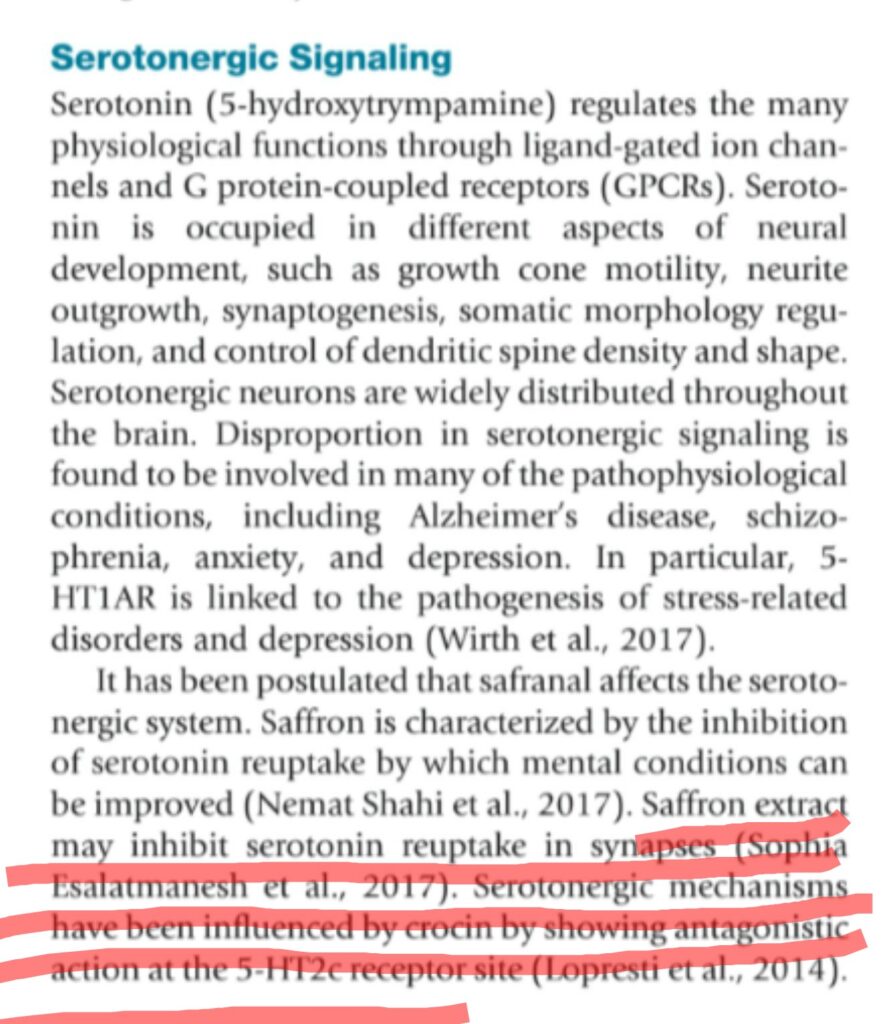
Saffron: The Age-Old Panacea in a New Light, by Maryam Sarwat · 2020, page 125, Chapter 10: Saffron in Brain Diseases, (Google Books) via (@DGrouf)
Another caution against taking saffron at the same time as curcumin/turmeric, as the phytonutrients have opposing mechanisms of action. https://twitter.com/MirrorManDan/status/1430203127257608192?s=19
Dizziness – niacin, nicotinamide and nicotine in combination, can have an adverse effect.
Dizziness may result from a combination of niacin, nicotinamide, and use of a nicotine patch. Niacin/(rxlist.18) Solution – stop taking the niacinamide.
Niacin is converted into niacinamide during metabolic use of the nutrient, so taking both is not really necessary.
“Chemically, niacin is one of the simplest vitamins, having the empirical formula C6H3O2N (Illus. 13-1). Nicotinic acid and nicotinamide correspond to 3-pyridine carboxylic acid and its amide, respectively.” […] “Nicotinic acid is converted to the amide form in the tissues, and Erickson et al. (1991) suggests this occurs in the rumen. [article about supplements for lactating cows > is helpful] Nicotinamide functions as a component of two coenzymes: nicotinamide adenine dinucleotide (NAD) and nicotinamide adenine dinucleotide phosphate (NADP).” […] (16)
“Although niacin coenzymes are widely distributed in the body, no true storage occurs. The liver is the site of greatest niacin concentration in the body, but the amount stored is minimal.” […] (16)
Niacin can be made from tryptophan, an amino acid, as long as there is also adequate protein, energy, vitamin B6, riboflavin and necessary hormones available. Iron is also needed. Synthesis may take place in the gut as well as throughout the body. See longer excerpt in the Reference List. (16)
Glyphosate may be reducing average tryptophan levels in our diet, and in our bodies.
Glyphosate residue in our food supply may be reducing our levels of tryptophan and other amino acids (14) and trace minerals such as manganese. (15) Glyphosate is a mineral chelator and antibiotic affecting a chemical pathway that affects tryptophan. That may disrupt bacterial health, and was thought to not risk human health too, however it may affect us due to our need for the amino acids., in addition to other effects that have been less studied then the shikimate pathway mechanism of action.
“The herbicide glyphosate inhibits the shikimate pathway of the synthesis of amino acids such as phenylalanine, tyrosine, and tryptophan.” (Vivankos et al., 2011) (14)
Potential long term risks – may affect liver health and gout – uric acid; quercetin may help reduce risk of uric acid build up.
People with liver damage or gout may need to avoid taking large doses of niacin long term (more than 2000-6000 mg/day). Taking it along with alcohol use may increase the risk of liver damage and worsen the symptoms of the niacin flush with itching. Long term use of large doses may lead to gout, excess uric acid. (7) Symptoms of gout can occur abruptly even waking up at night with severe joint pain, most frequently occurring in the joint at the base of the large toes. Other joint tissue can also be affected. Pain, swelling and redness in the affected toe or other joints are typical symptoms. (8)
Use of large doses of niacin/nicotinic acid for treatment of patients with symptoms of schizophrenia were studied extensively in the 1950s-70s. Use of nicotinamide was not found to help similarly and the treatment was most immediately beneficial for patients with acute onset of the schizophrenia symptoms. People with chronic schizophrenia took longer to respond to use of niacin and needed larger doses to achieve symptom relief. Regarding risk of toxicity, liver concerns, gout, and increases in blood uric acid were observed but were not too severe of a problem, compared to the adverse side effects seen with standard psychiatric medications, and some patients could use a different form or a smaller dose. “The vitamin has been given to patients suffering from gout whose symptoms were not aggravated and it did not interfere with their specific treatment for gout.” (9)
Uric acid/urate levels in gout can be reduces with use of xanthine oxidase inhibitors (10) which include the phytonutrient quercetin. (11) For more information about quercetin’s other benefits as a zinc ionophore and bioflavonoid see the recent post: COVID19, summary of nutrients that might help prevent, treat, recover.
Quercetin is found in many plant foods in small amounts, and rich in some foods like capers (Alcaparras) and cilantro. It is also found in citrus and pomegranate peel. “The researchers note that pickling promotes conversion of rutin (flavonoid compound also called rutoside in capers) to quercetin, the ingredient that they found to be an efficacious KCNQ channel activator. This makes pickled capers as the richest known “natural” source of quercetin, with a maximum reported concentration of 520 mg/100 g for canned capers, compared to a maximum of 323 mg/100 g quercetin for raw capers.” (12) People with Mast Cell overactivity (seasonal allergy & other symptoms might be present) may need to avoid pickled or other fermented foods as that can worsen mast cell symptoms, for more information see: MCAS/Histamine.
Other nutrients that may help as cofactors recommended by Dimitry Kat’s, Ph.D. include vitamin C, a B complex, vitamin D3, zinc, magnesium, and Black seed oil, quercetin, and N-acetyl cysteine could provide additional antioxidant support.
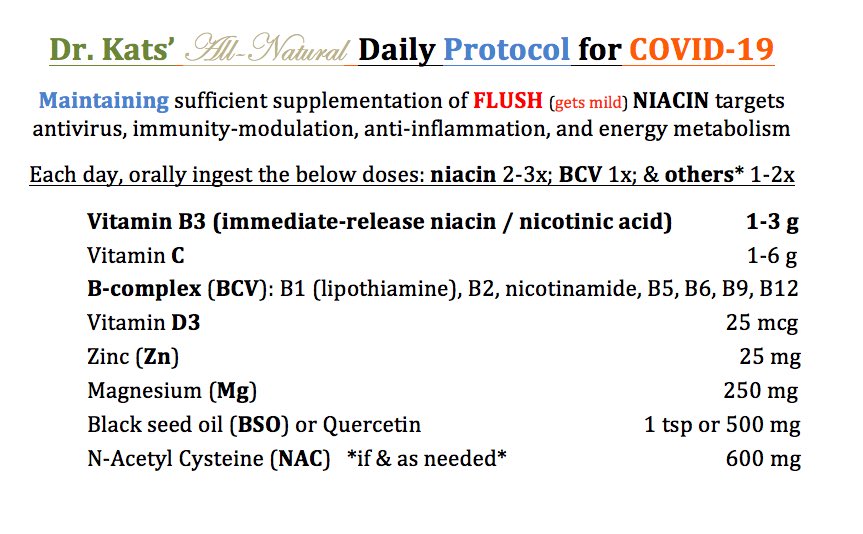
Dr. Kats’ Niatonin Protocol (update 9/2/21)
Melatonin and niacin are recommended in the most recent version of the Kats’ protocol, available in this post: Spike summary spreadsheet; telomerase, Circadian cycle & Nrf2, Aug. 22, 2021. Caution: Melatonin is a hormone normally present and active in very tiny amounts, not a milligram, micrograms, and too much may disrupt sleep cycle. Too much regularly, may suppress our own production of melatonin.
Simply focusing on improving sleep habits and getting full spectrum light during the day can help all of the genes and hormones effected by our circadian cycle. Hundreds of genes are activated or de-activated during the day/night transitions – during normal health. Modern life tends to keep us in the inflammatory day time mode – all of the time. That is really what Metabolic Syndrome is – constant low level inflammation instead of cycling between anti-inflammatory night-time growth and repair mode, and the active get busy and do stuff, inflammatory day-time mode.
Disclaimer: This information is provided for educational purposes within the guidelines of fair use. While I am a Registered Dietitian this information is not intended to provide individual health guidance. Please see a health professional for individual health care purposes.
Reference List
- Peter A. McCullough, MD, MPH. et al., Pathophysiological Basis and Rationale for Early Outpatient Treatment of SARS-CoV-2 (COVID-19) Infection. August 06, 2020 American Journal of Medicine, VOL 134, ISSUE 1, P16-22, JANUARY 01, 2021 DOI:https://doi.org/10.1016/j.amjmed.2020.07.003 https://www.amjmed.com/article/S0002-9343(20)30673-2/fulltext
- Mercol J, Is Niacin a Missing Piece of the COVID Puzzle?, Jan 20, 2021, mercola.com, https://articles.mercola.com/sites/articles/archive/2021/01/20/what-are-the-benefits-of-niacin.aspx
- Kats D, Sufficient niacin supply: the missing puzzle piece to COVID-19, and beyond?, preprint, https://osf.io/uec3r/
- Be Well: A Potential Role for Vitamin B in COVID-19, Maturitas, Shakoor H, Feehan J, Mikkelsen K, et al. Be well: A potential role for vitamin B in COVID-19. Maturitas. 2021;144:108-111. doi:10.1016/j.maturitas.2020.08.007 https://www.ncbi.nlm.nih.gov/pmc/articles/PMC7428453/
- Shakir KM, Kroll S, Aprill BS, Drake AJ 3rd, Eisold JF. Nicotinic acid decreases serum thyroid hormone levels while maintaining a euthyroid state. Mayo Clin Proc. 1995 Jun;70(6):556-8. doi: 10.4065/70.6.556. PMID: 7776715. https://pubmed.ncbi.nlm.nih.gov/7776715/
- Pirinen E, Auranen M, Khan NA, Brilhante V, Urho N, Pessia A, Hakkarainen A, Kuula J, Heinonen U, Schmidt MS, Haimilahti K, Piirilä P, Lundbom N, Taskinen MR, Brenner C, Velagapudi V, Pietiläinen KH, Suomalainen A. Niacin Cures Systemic NAD+ Deficiency and Improves Muscle Performance in Adult-Onset Mitochondrial Myopathy. Cell Metab. 2020 Jun 2;31(6):1078-1090.e5. doi: 10.1016/j.cmet.2020.04.008. Epub 2020 May 7. Erratum in: Cell Metab. 2020 Jul 7;32(1):144. PMID: 32386566. https://pubmed.ncbi.nlm.nih.gov/32386566/
- Niacin, mayoclinic.org, https://www.mayoclinic.org/drugs-supplements-niacin/art-20364984
- Gout – Symptoms & Causes, mayoclinic.org, https://www.mayoclinic.org/diseases-conditions/gout/symptoms-causes/syc-20372897
- Hoffer A, Megavitamin B-3 Therapy for Schizophrenia, Canad. Psychiat. Ass. J. Vol. 16 (1971) https://journals.sagepub.com/doi/pdf/10.1177/070674377101600605
- White WB, Gout, Xanthine Oxidase Inhibition, and Cardiovascular Outcomes. Circulation. 2018;138:1127–1129 https://www.ahajournals.org/doi/10.1161/CIRCULATIONAHA.118.036148
- Zhang C, Wang R, Zhang G, Gong D. Mechanistic insights into the inhibition of quercetin on xanthine oxidase. Int J Biol Macromol. 2018 Jun;112:405-412. doi: 10.1016/j.ijbiomac.2018.01.190. Epub 2018 Jan 31. PMID: 29410028. https://pubmed.ncbi.nlm.nih.gov/29410028/
- Kim Stewart, Discovery: Caper Berry’s Quercetin Activates KCNQ Potassium Channel. July 16, 2020, todayspractitioner.com https://todayspractitioner.com/botanical-medicine/discovery-caper-berrys-quercetin-activates-kcnq-potassium-channel/
- Serotonin Syndrome: Symptoms & Causes, mayoclinic.org https://www.mayoclinic.org/diseases-conditions/serotonin-syndrome/symptoms-causes/syc-20354758
- Vivancos PD, Driscoll SP, Bulman CA, et al. Perturbations of amino acid metabolism associated with glyphosate-dependent inhibition of shikimic acid metabolism affect cellular redox homeostasis and alter the abundance of proteins involved in photosynthesis and photorespiration. Plant Physiol. 2011;157(1):256-268. doi:10.1104/pp.111.181024 https://www.ncbi.nlm.nih.gov/pmc/articles/PMC3165874/
- Samsel A, Seneff S. Glyphosate, pathways to modern diseases III: Manganese, neurological diseases, and associated pathologies. Surg Neurol Int. 2015;6:45. Published 2015 Mar 24. doi:10.4103/2152-7806.153876 https://www.ncbi.nlm.nih.gov/pmc/articles/PMC4392553/
- Niacin, DSM.com, https://www.dsm.com/anh/en_US/products/vitamins/vitamin-nutrition-compendium/companion-animals/niacin.html “The amino acid tryptophan is a precursor for the synthesis of niacin in the body. There is considerable evidence that synthesis can occur in the intestine. There is also evidence that synthesis can take place elsewhere within the body. The extent to which the metabolic requirement for niacin can be met from tryptophan will depend first on the amount of tryptophan in the diet and second on the efficiency of conversion of tryptophan to niacin. The pathway of tryptophan conversion to nicotinic acid mononucleotide in the body is shown in Figure 13-1. Protein, energy, vitamin B6 and riboflavin nutritional status as well as hormones, affect one or more steps in the conversion sequence shown in Figure 13-1. Therefore, they can influence the yield of niacin from tryptophan. Iron is required by two enzymes for the conversion of tryptophan to niacin with a deficiency reducing tryptophan utilization.” (16)
- St. John’s Wort Drug Interactions with Antidepressants, verywellmind.com, https://www.verywellmind.com/st-johns-wort-drug-interactions-with-antidepressants-1066686
- Niacin, RxList.com https://www.rxlist.com/niacin/supplements.htm


